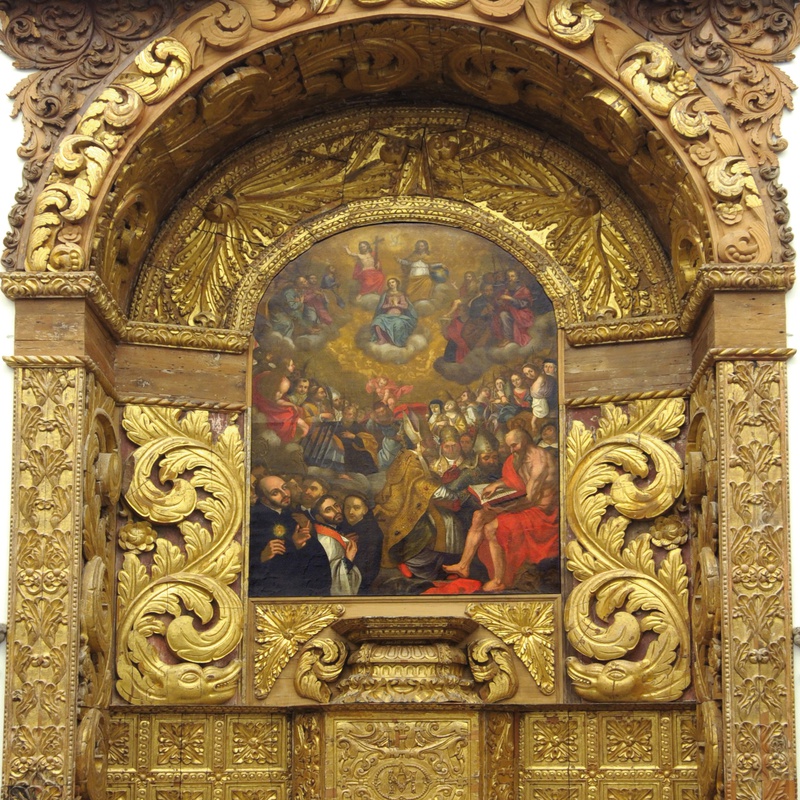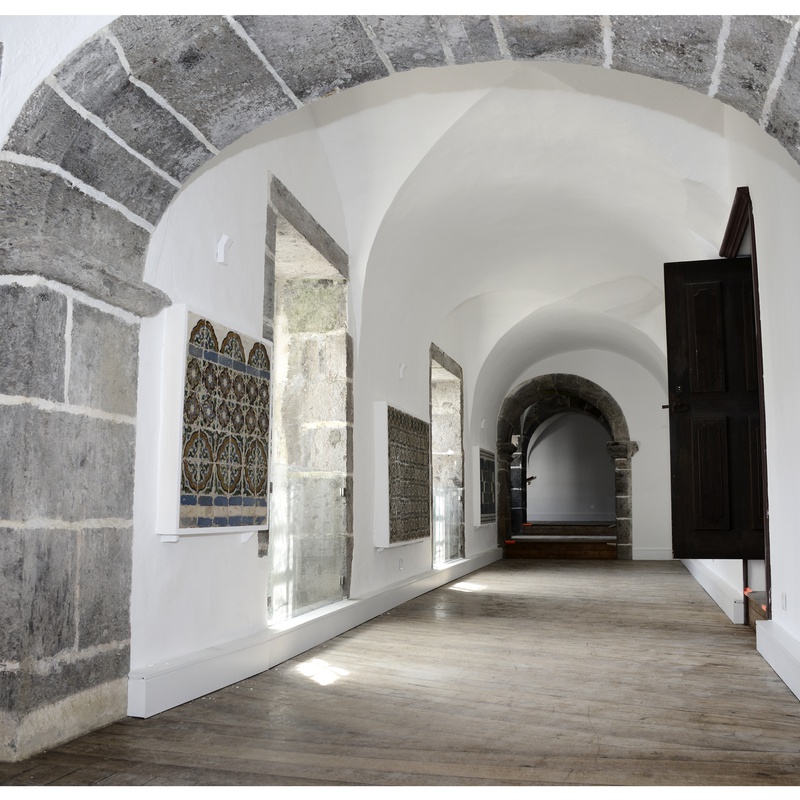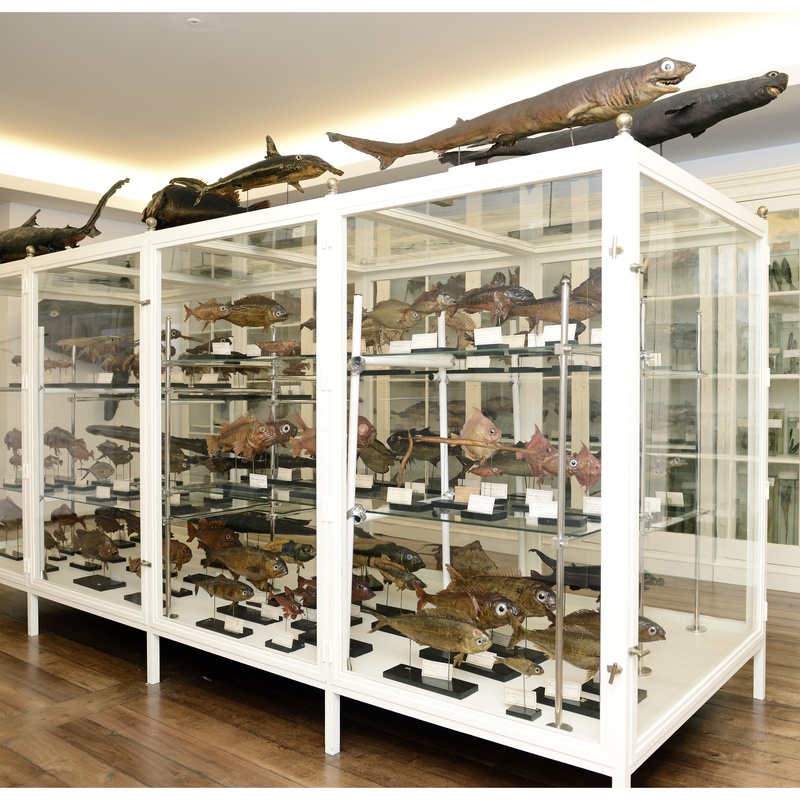Centenary of Natália Correia (1923-2023)
From Antitheses to the Absolute1 is an exhibition in tribute to Natália Correia (Fajã de Baixo, 1923 – Lisbon, 1993), designed as part of the regional celebrations for the hundredth anniversary of the birth and thirtieth anniversary of the death of the illustrious Azorean poet and writer Natália Correia.
A multifaceted figure and an undeniable reference in Portuguese literature of the twentieth century, Natália Correia left behind a prolific and diverse body of work, which includes children's stories, prose, fiction, novels, essays, chronicles, theater, and anthologies.
From an early age, Natália Correia collaborated extensively with the printed press, authoring columns and articles published in newspapers such as A Luta, Jornal Novo, A Capital, Jornal de Letras, Diário de Notícias, among others. In the 1980s, she also presented several television series, including notable ones like "Neste Lugar Onde" and "Mátria." In addition, she wrote the scripts for the films "Santo Antero" (1979) and "Soror Saudade" (1981), both directed by Dórdio Guimarães.
In her involvement in political activities, it is worth noting her participation in opposition movements to the Salazar regime since the 1940s. Her poetic and dramatic work was characterized by criticism of the Estado Novo dictatorship. In her dedication to public causes, the defense of her ideals, and Portuguese culture, Natália Correia played an active political role as a member of the Assembly of the Republic. She was first associated with the PSD party from 1979 to 1982 and later with the PRD from 1987 to 1991. In the later years of her life, she also founded the National Front for the Defense of Culture.
Natália Correia will forever be associated with the Carlos Machado Museum, one of the national public institutions that houses part of her legacy, including the contents of her residence and the artworks from her collection, which have been made public and are accessible to everyone in the present exhibition.
The works selected for this exhibition are grouped into different thematic lines, which we will designate as follows.
"Pose and Staging" is the name given to the collection of works displayed in the room located on the right side of the staircase leading to the temporary exhibition gallery on the first floor. In this room, a collection of portraits of Natália Correia, gathered from the 1940s until 1993, the year of her passing, is showcased. These portraits encompass various mediums and techniques that reflect the abundant iconographic legacy created around her iconic image, capturing the distinctive features of her body, face, and the dramatic pose associated with the cigarette holder, an element sufficient for the unequivocal recognition of her figure.
Within this exhibition space, we present portraits by the painters who celebrated her beauty, including artists such as Júlio de Sousa, Martins Gomes, Pedro Ruas, and Artur Bual. In the realm of sculpture, sculptural portraits by António Duarte, Martins Correia, and Isabel Meyrelles stand out. Among the foreign artists and poets who portrayed the Azorean writer, we reveal the imprecise drawing by Marcel Marceaux and a print by Sendo, which dates to the later years of the writer's life, where the beauty of her youth gives way to old age and the passage of time.
"The Ancestors" is the name of the second exhibition section, in which we delve into the personalities of her family circle and contacts with notable figures in Portuguese intellectual and political life who had an influence, both in the discovery of Natália Correia's poetic and literary vocation and in her introduction to public and political life.
The works gathered here, related to some of these mentors, are primarily portraits. Among them, you can see Almada Negreiros' self-portrait, Natália Correia's imaginative portrait of her mother, Maria José Oliveira, and the portrait of the Figueira da Foz journalist, writer, and friend Manuel Cardoso Marta.
The section "The Surrealist Circle" brings together a selection of works by artists and poets associated with Portuguese Surrealism, dating from the 1950s to the 1970s of the twentieth century. These works, which are prominently featured in Natália Correia's artistic collection, unequivocally demonstrate her interaction, friendship, and closeness to Portuguese surrealists. This connection not only influenced the visual arts but also manifested itself in the theatrical works she co-authored with Manuel de Lima, in Delfim da Costa's pamphlet, and in the creation of the "cadavre exquis" (exquisite corpse) that she participated with Isabel Meyrelles in an exhibition in 1958.
In the fourth section of the exhibition, titled "Champion of Freedom”, we aim to evoke the writer and Azorean poet's struggle against censorship. Natália Correia's courage, non-conformity, and opposition to the Salazar regime had a negative impact on her literary career, as her literary production was constantly targeted by the regime's censorship mechanisms. This is evident in the significant number of her poetic and dramatic works that were banned from circulation by censorship.
"Comunicação", published in 1959, was the first work censored and prohibited from circulating by the Estado Novo (1933-1974). From that point on and continuing for the next decade, censors silenced the literary creations of the Azorean writer. "Comunicação" (1959), "Cântico do País Emerso" (1961), "O Homúnculo" (1964), "Antologia da Poesia Portuguesa Erótica e Satírica" (1965), "O Vinho e a Lira" (1966), and "O Encoberto" (1969) were Natália Correia's books banned by the Salazarist-Marcelist censorship.
Since it is not possible to exhibit the books themselves, we present some passages from the censored works and an excerpt from the poem "A Defesa do Poeta" with which Natália Correia intended to defend herself in court in the context of the criminal case brought against her for the publication of "Antologia da Poesia Portuguesa Erótica e Satírica," a case that only concluded in 1970.
In addition to the written word, we offer works by Cruzeiro Seixas, Tereza Roza de Oliveira, and a watercolor by Lima de Freitas, all of which share the common thread of being inspired by works banned by censorship, specifically "Antologia da Poesia Portuguesa Erótica e Satírica," "O Vinho e a Lira," and "O Encoberto."
The fifth section, titled "Natália Correia, Art, and Artists" offers a comprehensive view of the artistic universe represented in Natália Correia's collection. This collection spans artists of different nationalities, revealing the network of contacts she established with the creators of the works she gathered in her residence. She managed to earn the respect and admiration of many, as evidenced by the personal dedications within the artworks.
Throughout her literary career, Natália Correia received essential collaboration from artists who illustrated her books. Notable illustrators included Martins Correia, Francisco Relógio, and Lino Tudela, whose works are on display in this exhibition.
In this section, we have assembled a selection of art criticism texts written by Natália Correia about the works of various artists for exhibition catalogs, at the invitation of the artists themselves. Through this avenue, the Azorean writer actively engaged in promoting and showcasing the talent and creations of contemporary artists, whether they had established careers or were less well-known.
The penultimate section, titled "Fighting the Extinction of Causes"2 seeks to evoke Natália Correia's political journey from the 1940s to 1991.
From the 1940s, we highlight Natália Correia's journalistic activities while working for the Sol weekly, where she wrote 43 articles. These articles focused on international politics, nuclear warfare, and women's issues, reflecting her political awareness and global knowledge at a very young age. We present a selection of texts published during that period, allowing visitors to engage in the reading.
During her prolific collaboration with the national press in the immediate aftermath of April 25, 1974, we give visibility to some of the articles she wrote, particularly in the "Crónicas Vagantes" where she staunchly defended her position on the critical events that marked the nation's life.
Within this section, we also include works of art related to this period, such as a sculpture of Francisco Sá Carneiro's head by Isabel Meyrelles, the poster commemorating May 1, 1976, by José de Guimarães, and four cartoons by SAM featuring the character "guarda Ricardo."
Lastly, a screen showcases moments from Natália Correia's life, primarily related to her intense political activities from 1979 to 1991.
Continuing the exhibition's journey, in the last section titled "Recognition and Tributes" we showcase the decorations and some of the awards that Natália Correia received between 1977 and 1992 in recognition of her meritorious contributions to Portuguese literature and culture.
In this section, we also present a portion of the medal collection from the Azorean writer's estate. These medals are related to travels, the celebration of significant events, or pay tribute to notable figures in Portugal's history.

The Sacred Art circuit focuses on the old College Church, where the lush façade, the resplendence of the altarpiece of the main altar, as well as the collection of 17th century tiles are assumed as a whole, in a unique monument of Baroque style. To this is added a gallery with a diversified collection where pieces from the 16th century stand out, as well as a valuable collection of works with a religious theme.

This tour presents the architectural characteristics of past convent buildings, but also the diversity of spaces, their dynamics and purposes, as well as exploring the way of life of the Poor Clares belonging to the female branch of the Order of Friars Minor, founded by Saint Francis of Assisi.

The Natural History Circuit presents a naturalist collection that was the basis for the Museum. It is distributed over 8 rooms where diversity, knowledge and the exotic, along with different fields of scientific knowledge, are exhibited, with special importance to zoology, geology, mineralogy and botany.